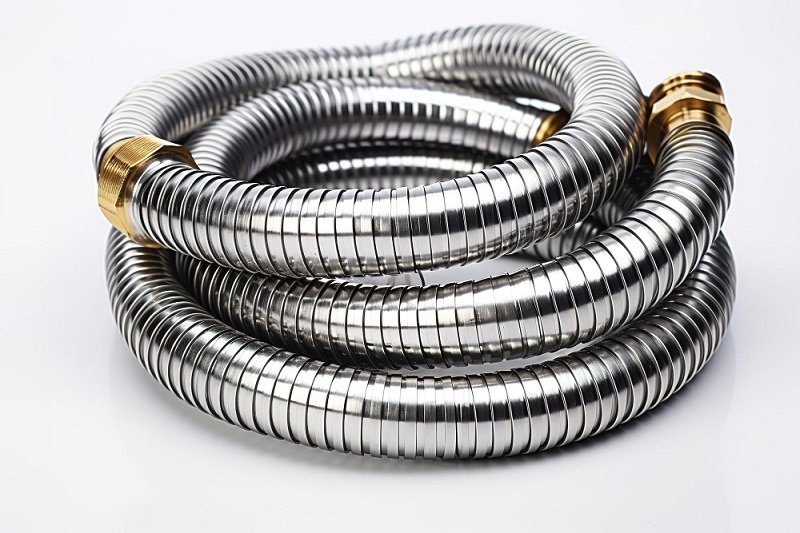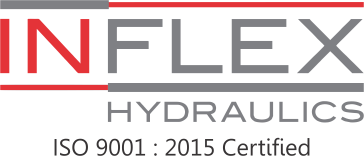In the realm of fluid and gas transfer, selecting the appropriate hose is crucial for ensuring efficiency, safety, and longevity of the system. Two commonly used types are flexible metal hose and braided hoses. While they might appear similar, their characteristics and applications differ significantly. This comprehensive guide delves into the intricacies of both, helping you make an informed decision for your specific needs.
Understanding Flexible Metal Hoses
Definition and Structure
Flexible metal hoses are engineered to transport fluids and gases under varying pressure and temperature conditions. They are typically constructed from materials like stainless steel, bronze, or Monel, which impart durability and resistance to corrosion. The core component is a corrugated metal tube, designed to provide flexibility while maintaining structural integrity. To enhance pressure resistance, these hoses often feature an external braiding of stainless steel wire.
Key Characteristics
- Flexibility: The corrugated design allows for significant flexibility, accommodating movements, vibrations, and thermal expansions without compromising the hose’s integrity.
- Durability: Constructed from robust metals, these hoses exhibit high resistance to wear, corrosion, and extreme temperatures, making them suitable for harsh environments.
- Pressure Resistance: The external braiding not only protects the hose but also enhances its ability to withstand higher internal pressures.
Also Read: Camlock Couplings: 8 Important Things You Need to Know
Common Applications
Flexible metal hoses are utilized across various industries due to their versatility:
- Chemical Processing: Ideal for transporting corrosive chemicals and acids, thanks to their corrosion resistance.
- Food and Beverage: Used for transferring food products and liquids, as they are hygienic and easy to clean.
- Automotive Industry: Employed in exhaust systems as vibration decouplers, handling high temperatures and movements.
- Aerospace: Suitable for applications requiring flexibility under extreme conditions, such as in aircraft fuel and hydraulic systems.
Exploring Braided Hoses
Definition and Structure
Braided hoses consist of an inner flexible tube, typically made from materials like rubber or Teflon (PTFE), reinforced with an external layer of braided metal or synthetic fibers. The braiding provides structural support, enhancing the hose’s strength and pressure-handling capabilities.
Key Characteristics
- Enhanced Pressure Capacity: The braided reinforcement allows these hoses to handle higher pressures compared to non-reinforced hoses.
- Flexibility: While offering substantial strength, braided hoses maintain flexibility, making them suitable for dynamic applications.
- Versatility: Depending on the materials used for the inner tube and braiding, these hoses can be tailored for specific applications, including chemical resistance or high-temperature tolerance.
Common Applications
Braided hoses are prevalent in various sectors:
- Automotive and Transportation: Commonly used in brake systems to provide flexibility and strength, ensuring efficient braking performance.
- Industrial Machinery: Utilized in hydraulic and pneumatic systems where high-pressure fluid transfer is required.
- Residential Plumbing: Employed in household applications such as connecting faucets and toilets, owing to their flexibility and ease of installation.
Comparative Analysis: Flexible Metal Hose vs. Braided Hose
When deciding between flexible metal hoses and braided hoses, several factors come into play:
Pressure Handling
- Flexible Metal Hoses: Withstand high pressures, especially when reinforced with external braiding.
- Braided Hoses: Pressure capacity varies based on the materials used but generally suitable for medium to high-pressure applications.
Recommended Reading: Camlock Coupling Types: Choosing the Right Quick-Connect Coupling for Air, Water, Oil, and High-Pressure Applications
Temperature Resistance
- Flexible Metal Hoses: Excel in high-temperature environments, capable of handling extreme heat without degradation.
- Braided Hoses: Temperature tolerance depends on the inner tube material; for instance, PTFE-lined hoses can handle higher temperatures than rubber-lined ones.
Flexibility and Bend Radius
- Flexible Metal Hoses: Offer good flexibility but have a larger bend radius compared to braided hoses.
- Braided Hoses: Typically more flexible with a tighter bend radius, making them ideal for confined spaces.
Durability and Longevity
- Flexible Metal Hoses: Highly durable, resistant to corrosion, and have a long service life, even in harsh conditions.
- Braided Hoses: Durability varies with material; metal-braided hoses offer good durability, while synthetic-braided ones may have a shorter lifespan.
Cost Considerations
- Flexible Metal Hoses: Generally more expensive due to material and construction complexity.
- Braided Hoses: Often more cost-effective, especially those with synthetic braiding.
Making the Right Choice for Your Application
To determine the most suitable hose for your application, consider the following aspects:
- Operating Conditions: Assess the pressure, temperature, and environmental factors the hose will be exposed to.
- Flexibility Requirements: Identify the necessary flexibility and bend radius for your system layout.
- Chemical Compatibility: Ensure the hose materials are compatible with the fluids or gases being transported.
- Regulatory Standards: Verify compliance with industry standards and regulations pertinent to your application.
- Budget Constraints: Balance the initial investment with the expected lifespan and maintenance costs.
Selecting between flexible metal hoses and braided hoses hinges on a thorough understanding of your application’s specific demands. While flexible metal hoses offer superior durability and temperature resistance, braided hoses provide versatility and cost-effectiveness. By meticulously evaluating the operational requirements and environmental conditions, you can choose a hose that ensures safety, efficiency, and longevity in your fluid or gas transfer system.
For more detailed information on flexible metal hoses, you can refer to the Wikipedia page on metal hoses.



